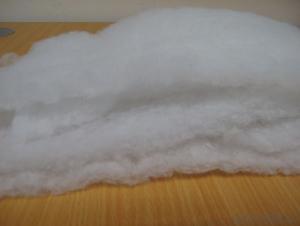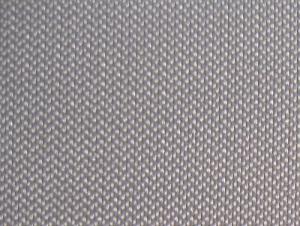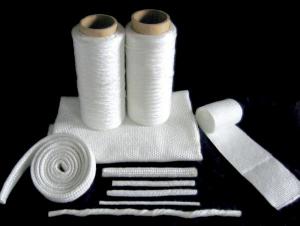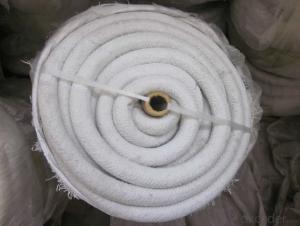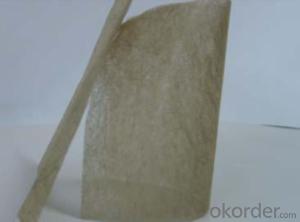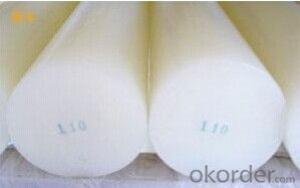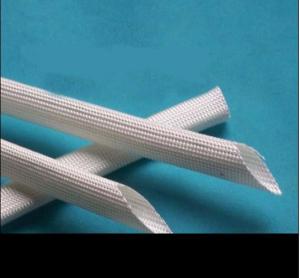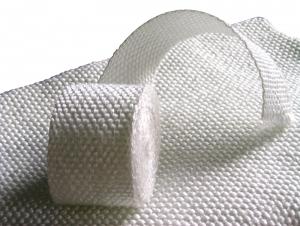heat insulation refractory Welding Pillow fiberglass fabric made 550C- 1000C
- Loading Port:
- Shanghai
- Payment Terms:
- TT OR LC
- Min Order Qty:
- 1 m.t.
- Supply Capability:
- 111 m.t./month
OKorder Service Pledge
OKorder Financial Service
You Might Also Like
Specifications
Welding Pillow fiberglass fabric made
Welding pillow, fire resistance pillow, it is made of fiberglass
Description:
Welding pillow, fire resistance pillow, it is made of fiberglass and insert with glass wool or ceramic wool, sewing it into pillow, it is good welding products while need pillow shape fire resistance.
We can manufacture all kinds of welding pillor, fire resistance pillow as per customer request. Just contact our sales for details.
Outside Materials : fiberglass fabrics, Silica fabrics, heat treated fiberglass fabrics, silicone coated fiberglass fabrics, Ceramic fiber fabric, Carbonizedfiber fabrics, Aluminum coated fiberglass fabrics, Acrylic coated fiberglass fabrics.
Inside Materials: Glass fiber wool, ceramic fiber wool
Temperature resistance: 500 Deg. C . to 1000 Deg. C.
Size: as per customer request
- Q:How do glass fiber textiles contribute to weather resistance?
- Glass fiber textiles offer several ways to enhance weather resistance. To begin with, glass fibers possess a remarkable resistance to moisture, making them ideal for outdoor use. Unlike natural fibers like cotton or wool, glass fibers do not absorb water, preventing fabrics from becoming heavy and losing their shape. This moisture resistance ensures that glass fiber textiles maintain their structural integrity even in wet weather conditions. In addition, glass fibers exhibit exceptional dimensional stability, meaning they do not shrink or stretch when exposed to changes in temperature or humidity. This quality is crucial for preserving the shape and performance of textiles, particularly in extreme weather conditions. Moreover, glass fiber textiles boast a high melting point, enabling them to endure high temperatures without deforming or melting. Furthermore, glass fibers inherently resist UV radiation. Prolonged exposure to sunlight can cause fabrics to fade, weaken, or deteriorate over time. However, glass fiber textiles are highly resistant to UV damage, guaranteeing their longevity and durability in outdoor applications. Moreover, glass fibers possess high tensile strength, rendering them resistant to tearing or ripping. This strength is vital for withstanding strong winds, heavy rain, or other adverse weather conditions. Consequently, glass fiber textiles find extensive use in applications such as awnings, canopies, or outdoor furniture covers, where their strength and weather resistance are indispensable. In conclusion, glass fiber textiles contribute to weather resistance through their moisture resistance, dimensional stability, UV resistance, and high tensile strength. These properties make them highly suitable for various outdoor applications, providing durability, longevity, and protection against adverse weather conditions.
- Q:Can glass fiber textiles be used for interior design purposes?
- Yes, glass fiber textiles can be used for interior design purposes. Glass fiber textiles are made from thin strands of glass that are woven together to create a fabric-like material. These textiles have several properties that make them suitable for interior design applications. Firstly, glass fiber textiles are extremely durable and long-lasting. They are resistant to wear and tear, making them ideal for high-traffic areas such as upholstery or wall coverings. Additionally, they are also resistant to mold, mildew, and pests, making them a hygienic choice for interior design. Secondly, glass fiber textiles have excellent fire resistance properties. They do not easily catch fire and do not contribute to the spread of flames, making them a safe choice for interior spaces. This makes them suitable for applications such as curtains, carpets, or wall panels where fire safety is a concern. Furthermore, glass fiber textiles can be treated with various coatings or finishes to enhance their performance. They can be made water repellent, stain resistant, or even anti-bacterial, depending on the desired application. This versatility allows for a wide range of design possibilities and ensures that the textiles can withstand the demands of everyday use. In terms of aesthetics, glass fiber textiles can be produced in a variety of colors, patterns, and textures, offering endless design options. They can mimic the look and feel of other materials such as silk or wool, providing a luxurious feel without the associated drawbacks. Glass fiber textiles can be used for upholstery, drapes, or even as decorative wall panels, adding a touch of sophistication to any interior space. In conclusion, glass fiber textiles are a practical and versatile choice for interior design purposes. Their durability, fire resistance, and customizable properties make them suitable for a wide range of applications. Whether it's for upholstery, curtains, or wall coverings, glass fiber textiles offer both functionality and aesthetics, making them an excellent choice for interior designers.
- Q:What are the different weaving patterns used for glass fiber textile?
- There are several different weaving patterns commonly used for glass fiber textiles, each with its own unique characteristics and applications. Some of the most common weaving patterns for glass fiber textiles include plain weave, twill weave, satin weave, leno weave, and basket weave. 1. Plain weave: This is the simplest and most common weaving pattern. It involves interlacing the warp and weft yarns in an over-under pattern, creating a balanced and strong fabric. Plain weave glass fiber textiles are often used in applications where strength and durability are important, such as reinforcement materials in composites. 2. Twill weave: This pattern is characterized by a diagonal line or rib effect on the fabric surface. Twill weave glass fiber textiles are known for their excellent drapability and drapeability, making them suitable for applications like clothing, upholstery, and reinforcement in curved composite structures. 3. Satin weave: Satin weave glass fiber textiles have a smooth and lustrous surface due to the way the yarns are interlaced. This weaving pattern creates long floats on the fabric surface, resulting in a soft and flexible material. Satin weave glass fiber textiles are commonly used in high-end applications such as luxury apparel, automotive interiors, and decorative fabrics. 4. Leno weave: Leno weave is a unique pattern that involves crossing two warp yarns over each other and then interlacing with the weft yarn. This creates a stable and open fabric structure, often used in applications that require good ventilation and transparency, such as filters, mosquito nets, and curtains. 5. Basket weave: In basket weave, two or more warp yarns are woven together as one, and the weft yarns are interlaced between these pairs. This creates a fabric with a distinctive checkerboard-like appearance. Basket weave glass fiber textiles are commonly used in applications that require a balance between strength and flexibility, such as bags, upholstery, and reinforcement in composite structures. These different weaving patterns offer a variety of properties and characteristics that make them suitable for different applications. The choice of weaving pattern for glass fiber textiles depends on factors such as desired strength, flexibility, drapeability, transparency, and surface appearance.
- Q:Can glass fiber textiles be used in footwear?
- Yes, glass fiber textiles can be used in footwear. They are commonly used in shoe manufacturing to add strength, durability, and support to the footwear. Glass fiber textiles provide excellent resistance to abrasion and can enhance the overall performance and longevity of the shoes.
- Q:What is the difference between clothing material, chemical fiber and fiber?
- Chemical fiber fabric is a new type of clothing material developed in modern times, and has many kinds. Here mainly refers to the chemical fiber processed into pure spinning, blended or interwoven fabric, that is to say by the chemical fiber fabrics, blended, and not between the natural fiber fabric, chemical fiber fabric woven by the characteristics of properties of chemical fiber itself.
- Q:Can glass fiber textile be used in reinforcement materials?
- Glass fiber textiles, also known as fiberglass fabrics, can serve as reinforcement material. These textiles are created through the weaving or knitting of fine strands of glass fibers. They possess qualities such as high tensile strength, lightweight composition, and exceptional resistance to heat, chemicals, and electrical conductivity. Across various industries, glass fiber textiles are commonly employed for the purpose of reinforcing materials. In the construction sector, they reinforce structures by being incorporated into composite materials like fiberglass-reinforced plastic (FRP), thus enhancing strength and durability. Similarly, in the automotive industry, they are utilized in reinforcing car bodies, interiors, and engine components. Additionally, glass fiber textiles find applications in aerospace, marine, and sports sectors. In these fields, they reinforce components such as aircraft wings, boat hulls, and sporting equipment. They are also utilized in the manufacturing of electrical insulators, circuit boards, and high-performance textiles. The utilization of glass fiber textiles as reinforcement materials presents numerous advantages. Notably, they possess a lightweight nature, thereby reducing the overall weight of the final product. This attribute, coupled with their excellent strength-to-weight ratio, ensures high tensile strength while minimizing weight. Moreover, they exhibit resistance to corrosion and degradation, rendering them suitable for outdoor and harsh environment applications. In conclusion, due to their high strength, lightweight composition, and resistance to various environmental factors, glass fiber textiles can indeed be employed as reinforcement materials. Their versatility and broad range of applications establish them as a preferred choice in numerous industries.
- Q:Can glass fiber textiles be used in medical bandages or dressings?
- Yes, glass fiber textiles can be used in medical bandages or dressings. Glass fiber textiles are lightweight, strong, and have high tensile strength, making them ideal for use in medical applications. They can be woven or knitted into fabrics with different textures and porosity, allowing for breathability and moisture management. Glass fiber textiles can also be coated with antimicrobial agents to prevent infection and promote healing. Additionally, their non-absorbent properties make them suitable for use in situations where excessive moisture needs to be managed, such as in wound care. However, it is important to note that glass fibers can be irritating to the skin, so it is vital to use them in combination with other materials or coatings to ensure patient comfort and safety.
- Q:How do glass fiber textiles contribute to UV resistance?
- Glass fiber textiles contribute to UV resistance through their natural properties and construction. Firstly, glass fibers themselves are inherently resistant to UV radiation. Unlike organic materials such as cotton or polyester, glass does not degrade or weaken when exposed to sunlight. This means that glass fiber textiles do not break down over time due to UV exposure, ensuring their longevity and durability. Additionally, glass fiber textiles can be designed with specific structures that enhance their UV resistance. For example, manufacturers can create fabrics with tighter weaves or thicker fibers, which can effectively block a higher percentage of UV rays from penetrating the fabric. These structural modifications help to reduce the amount of UV radiation that reaches the skin or underlying surfaces. Glass fiber textiles also have the ability to reflect UV radiation. The smooth and shiny surface of glass fibers allows them to bounce off a significant portion of the incoming UV rays, preventing them from being absorbed by the fabric. This reflection of UV radiation further enhances the overall UV resistance of glass fiber textiles. Moreover, glass fiber textiles can be treated with UV-resistant coatings or finishes to enhance their UV protection. These coatings can add an additional layer of protection against UV rays, further reducing their ability to penetrate the fabric and cause damage. These treatments can also provide additional benefits such as water repellency or stain resistance, making the textiles more versatile and suitable for outdoor applications. In summary, glass fiber textiles contribute to UV resistance through their inherent resistance to UV radiation, their ability to reflect UV rays, and the potential for structural modifications or coatings that enhance their UV protection. These properties make glass fiber textiles an excellent choice for applications where UV resistance is desired, such as outdoor furniture, awnings, or protective clothing.
- Q:What are the different types of glass fibers used in textiles?
- Textiles commonly utilize multiple types of glass fibers, including E-glass, S-glass, C-glass, and A-glass. E-glass, also known as electrical glass, is widely utilized in textiles due to its exceptional electrical and chemical resistance properties, as well as its high strength-to-weight ratio. It finds applications in composites reinforcement, electrical cable insulation, and textile reinforcement for diverse purposes. S-glass, or structural glass, boasts a higher tensile strength and stiffness compared to E-glass. Consequently, it is prevalent in applications requiring superior mechanical strength, such as aerospace and military uses. S-glass fibers are frequently employed in the production of high-performance textiles like bulletproof vests, helmets, and protective gear. C-glass, or chemical glass, exhibits increased chemical resistance relative to E-glass. Its usage is common in situations involving exposure to harsh chemicals, such as manufacturing chemical-resistant gloves and aprons. A-glass, or alkali glass, demonstrates higher alkali resistance compared to E-glass. It is typically employed in applications that involve exposure to alkaline materials, like textiles used in the construction industry. Ultimately, the selection of glass fiber type hinges on the specific requirements of the application. Each type offers distinct properties and characteristics that render them suitable for a wide range of textile uses.
- Q:How do glass fiber textiles compare to aramid textiles?
- Glass fiber textiles and aramid textiles have different properties and applications. Glass fiber textiles are known for their excellent strength, high temperature resistance, and electrical insulating properties. They are commonly used in industries such as automotive, aerospace, and construction. Aramid textiles, on the other hand, are known for their exceptional heat resistance, high tensile strength, and flame retardancy. They find applications in industries like military, firefighting, and protective clothing. While both textiles have their unique advantages, the choice between glass fiber and aramid textiles ultimately depends on the specific requirements of the application.
1. Manufacturer Overview |
|
|---|---|
| Location | |
| Year Established | |
| Annual Output Value | |
| Main Markets | |
| Company Certifications | |
2. Manufacturer Certificates |
|
|---|---|
| a) Certification Name | |
| Range | |
| Reference | |
| Validity Period | |
3. Manufacturer Capability |
|
|---|---|
| a)Trade Capacity | |
| Nearest Port | |
| Export Percentage | |
| No.of Employees in Trade Department | |
| Language Spoken: | |
| b)Factory Information | |
| Factory Size: | |
| No. of Production Lines | |
| Contract Manufacturing | |
| Product Price Range | |
Send your message to us
heat insulation refractory Welding Pillow fiberglass fabric made 550C- 1000C
- Loading Port:
- Shanghai
- Payment Terms:
- TT OR LC
- Min Order Qty:
- 1 m.t.
- Supply Capability:
- 111 m.t./month
OKorder Service Pledge
OKorder Financial Service
Similar products
New products
Hot products
Related keywords
